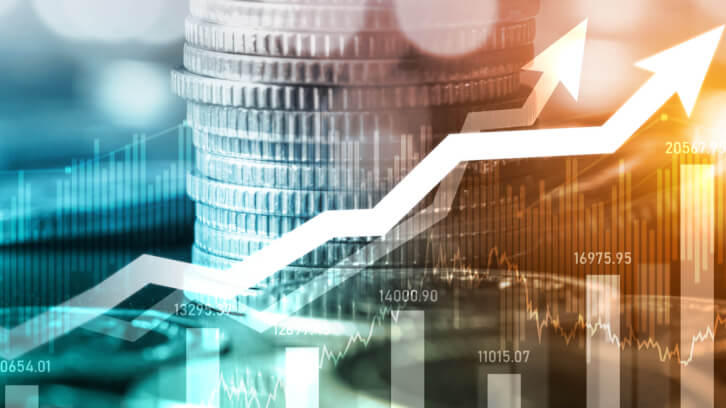The food system never stops, it’s always dynamic with considerable ebbs and flows through time and indeed through geography. But the last few years have been particularly active and challenging.
Food security and the cost-of-living
The pandemic followed by the Russian invasion of Ukraine has dramatically changed things for the UK and beyond, pushing food security into the spotlight.
With the war, we have seen certain raw material and commodity prices rising, including fuel, and this has led to serious food inflation.
Food manufacturers have been faced with huge cost increases across energy, ingredients and transport. And while annual producer price inflation rates have recently turned negative, with prices in some sectors falling, the Office for National Statistics (ONS) say their index levels for both input and output prices remain much higher than 2021 levels.
Rising material prices top concern
According to Aptean’s latest trend report, which Joris Kolff – the tech company’s value creation leader in food and beverage – covered in Food Manufacture's recent webinar, rising inflation and material prices are rated top concerns by 39% of food and beverage companies.
Despite this, as many as 90% of food and beverage manufacturers surveyed for the report, say they are confident revenues will increase.
Helping these revenues to increase is said to be the implementation of technology, with the Aptean findings revealing that the roll-out of EPR software has seen the revenue and profit of surveyed grow.
How inflationary trends are impacting consumer choices
Meanwhile, food prices for consumers are starting to ease – but that’s not to say they’re not still high. Prices of food and non-alcoholic beverages rose by 12.2% in the year to September 2023, according to the latest Consumer Prices Index including owner occupiers’ housing costs (CPIH).
ONS says this has dropped since August by around 10.3%, with the biggest downward contributors being milk, cheese and eggs, alongside mineral waters, soft drinks and juices.
Despite the decrease, half of adults across Britian say they’ve spent more than usual to get what they normally buy when food shopping in the past two weeks. The findings also report that (over the same time period) as many as 48% of adults say they are buying less food. Ninety-three percent owe one of the reasons for this to rising food price tags.
“It's been a real struggle for many British families over the last two years and this has brought forth the important of food,” said Clive Black, vice chairman, head of consumer research for Shore Capital, in Food Manufacture’s most recent webinar – State of the Food and Drink Industry and its Future Outlook.
When one has high food inflation and high energy costs – it’s a real bind for households and in turn, it has a big impact on not just low-income households but upon overall consumer behaviour.
When it comes to inflation’s impact on trends, Adam Cohen who works for flavour house brand I.T.S as its marketing manager, says this is driving a demand for frugal indulgence.
“We have seen that 83% of UK adults have less disposable income as a result of the cost-of-living crisis and this has led to an 86% rise in food and beverage launches with a budget claim,” he said.
“But there is still this sense that people want to indulge, they still want premium products even though they’re pulling back on spending. So we’re seeing a trend of if people are going to spend money, they want to make sure it’s a strong and exciting purchase. And that’s much more likely to happen when your food and drink have interesting tastes and flavours.
“So we won’t see premium products disappearing, but how they’re positioned will alter.”
This new world order has seen UK policymakers start to place more importance in food security and affordability.
Taking food for granted
“Food security and affordability have risen to the top of the charts for policymakers and pushed one or two other things that have pervaded the last two decades of food policy a bit further down,” continued Black. “But those things aren’t going away – we continue to see volatility in climate and the implications this is having on agricultural outcome.
“There are real concerns going forward around food security – we are one bad harvest away from very high wheat prices.”
As a nation, the UK has taken food for granted – with government not placing our food security as high up on the agenda as it should have been, and consumers expecting all kinds of food to be available cheaply, all year round.
Further, the UK boasts some of the highest animal welfare standards – and whilst we can be proud of that, it does come at a cost.
As Black emphasised during the webinar, if society wants higher animal welfare and for agriculture and the food industry to play a part in achieving net zero, and protecting and enhancing the environment, it will cost money.
“It's all going to require capital investment and a lot of digital analysis,” he stated.
And while people say sustainability will sway a purchase (as many as 89% in I.T.S findings), Cohen acknowledged that intensions don’t always come to fruition. “They do want these things – they do want sustainability but when it comes down to budget, sometimes it’s a hard push.”
Meanwhile, the UK remains in the grip of an obesity crisis – and industry is responding with healthier offerings. This, Black says will result in the functionality of taste becoming much more important in the future.
With all these wants and needs hanging in the balance, the key question for consumers and policymakers is how do we develop a food system that is sustainable and delivers on all fronts?
Reflecting on this, Black posed a question to the audience: “Do shoppers pay enough for their food? Based on the fact that we need food security, safe food, food that meets our health and well-being requirements, food that’s kind to animals and supports environmental sustainability – my clear conclusion is that we don’t.
“We've taken food for granted for many years. We need to think about food as something that's essential to our well-being and lifestyles.
“We need secure food supplies and in that respect, there is a need for a national debate. There is a need for the food industry to engage constructively with the consumer, with shoppers, with interested parties and governments.”
Digital transformation
As Black stated, the future is going to necessitate much investment and much data.
Food and drink companies are recognising this though and beginning to embrace the benefits of technology, with the Aptean report saying as many as 93% of companies they surveyed are in the process of digital transformation. Among those, one in five say they have completed their project and are now benefiting from it.
Key reasons among tech adoption comes down to cost again – with the industry after a clearer picture of their overheads through data insight, as well as a way of improving efficiency and in turn, hopefully, lowering their costs.
While the Aptean report observed that companies are using tech to help with visibility, accuracy and rapid data access are benefiting from revenue growth, it also noted transparency remains a complex matter. As many as 35% said they are still finding it difficult to quickly obtain and analyse data on business performance and efficiency.
This, Kolff said, is where artificial intelligence (AI) will play its part – and already, one in five are investing in this technology to improve their data analytics and decision making.
For those already using AI, the Aptean report found there has been higher revenue (10.6%) and profit growth (10.4%), compared to those with no plans to leverage AI (8.4% revenue and 7.3% profit).





